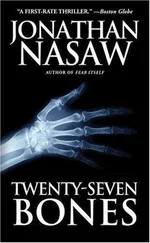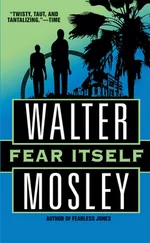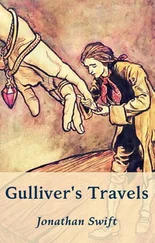Jonathan Nasaw - Fear itself
Здесь есть возможность читать онлайн «Jonathan Nasaw - Fear itself» весь текст электронной книги совершенно бесплатно (целиком полную версию без сокращений). В некоторых случаях можно слушать аудио, скачать через торрент в формате fb2 и присутствует краткое содержание. Жанр: Триллер, на баскском языке. Описание произведения, (предисловие) а так же отзывы посетителей доступны на портале библиотеки ЛибКат.
- Название:Fear itself
- Автор:
- Жанр:
- Год:неизвестен
- ISBN:нет данных
- Рейтинг книги:5 / 5. Голосов: 1
-
Избранное:Добавить в избранное
- Отзывы:
-
Ваша оценка:
- 100
- 1
- 2
- 3
- 4
- 5
Fear itself: краткое содержание, описание и аннотация
Предлагаем к чтению аннотацию, описание, краткое содержание или предисловие (зависит от того, что написал сам автор книги «Fear itself»). Если вы не нашли необходимую информацию о книге — напишите в комментариях, мы постараемся отыскать её.
Fear itself — читать онлайн бесплатно полную книгу (весь текст) целиком
Ниже представлен текст книги, разбитый по страницам. Система сохранения места последней прочитанной страницы, позволяет с удобством читать онлайн бесплатно книгу «Fear itself», без необходимости каждый раз заново искать на чём Вы остановились. Поставьте закладку, и сможете в любой момент перейти на страницу, на которой закончили чтение.
Интервал:
Закладка:
Jonathan Nasaw
Fear itself
Six Suites for Cello Solo
1
Wayne Summers opened his eyes to find himself in the dark, surrounded by the chirring and rustling of unseen birds. He tried to tell himself it was only a dream, but the feel of the rough mattress-ticking beneath him and the fetid, faintly ammoniacal smell of feathers and old newspapers and bird dung argued otherwise.
Wayne struggled blindly to his feet, heard a shrill hiss only inches from his head, then felt the buffeting of heavy, silent wings, followed by a sharp blow to his ear. He threw himself back onto the mattress and curled into a ball with his arms thrown up to protect his head-he didn’t know he’d been screaming until he stopped and heard the silence.
Then, filling the silence, the unbearable chirring and rustling again, the nervous tip-tap shuffle of hard claws on cage floors, the shuddering noise of birds ruffling their feathers for grooming. And, intermittently, the muffled beating of those heavy wings only a few feet away in the dark.
Unless, of course, it wasn’t dark. Wayne brought his hand toward his face until his palm touched his nose-there was no change in the quality of the blackness. For the first time it occurred to him that he might have gone blind-but how would you know, how could you tell? He tried to think back, to remember how he’d come to be here, but the memories were so wispy that trying to catch hold of them was like grasping at smoke rings: the harder you clutched, the quicker they dissolved.
Whimpering softly, Wayne fingered his torn earlobe. Sliced clean through-a razor-sharp beak or talon. Raptor, most likely: Wayne, an ornithophobe, knew from the studies he’d undertaken as part of Dr. Taylor’s desensitization therapy that it had to be either a raptor or a carrion eater, and of the two, only the raptors had need of silent wings. Noise was not a problem for the carrion eaters-their prey wasn’t going anyplace.
The mattress beneath his ear was damp with blood by this time, and the panic was coming in waves, one big roller after another. Wayne knew he could forestall a panic-induced blackout (or, as Dr. Taylor called it, a vasovagal syncope) by breathing slowly from the diaphragm while tensing and relaxing his muscles. He also knew he could stop the bleeding by pressing the edges of the wound together with his fingertips. But he wasn’t sure he wanted to do either. After all, he told himself as his consciousness slipped away, there are worse things in life than bleeding to death while you’re asleep-if he hadn’t known that before, he knew it now.
But bleeding to death was not going to be an option for Wayne-at least not yet. After only a few minutes of sweet unconsciousness, he was awakened by a sharp pinching sensation in his left earlobe. And since pinching that same ear was how Wayne’s mother always brought him around after what she referred to as one of his “faint’nin’ spells,” he allowed himself the momentary luxury of pretending he was back home in the apartment they shared on Fillmore Street, and that he’d had a blackout and she was pinching him awake.
Then he opened his eyes and found himself lying in the dark with his hands now cuffed behind him. Someone or something was indeed pinching the torn edges of his earlobe together, and when he tried to pull his head away, the grip only tightened.
“Who are you?” Wayne asked into the darkness.
“Sssh, hold still.”
Man’s voice-sounded like an older white guy. Familiar, but Wayne couldn’t quite place it. “Why are you doing this to me?”
The pressure on his earlobe eased. “Looks like the bleeding’s just about stopped.”
Looks like? Oh, God, no. “Am I blind? Have I gone blind? Please, I have to know.”
No answer-just a pager beeping in the darkness, followed by the sound of receding footsteps.
“Please, can’t you even tell me that?”
Footsteps, climbing stairs.
“Please, I-”
But by then Wayne had his answer: a door opened at the top of a flight of open-treaded steps, admitting just enough light to assure him that his eyes still functioned, before closing again, leaving him with only the afterimage of the ghostly white, heart-shaped face of an enormous barn owl tethered to a perch above his head.
2
From the highway, the unremarkable three-story building on the lightly wooded rise looked like just about every other new office building in the Virginia suburbs west of Washington.
Which was exactly the point, noted FBI Investigative Specialist Linda Abruzzi, formerly Special Agent Abruzzi, as she pulled up to the guard kiosk in her ’93 Geo Prizm. If all government architecture can be divided into two periods, before Oklahoma City and after Oklahoma City, the Department of Justice’s recently opened auxiliary office building, though small, was definitively post-O.C. in design and construction, and its first, cheapest, and most effective line of defense was anonymity. No signs, no visitors, no press, no exceptions.
It was only when you got closer that you began noticing a few subtle distinctions. The kiosk, for instance, anchored two reinforced steel gates and was situated at the bottom of the approach road, a hundred yards distant from the building, while the parking lot was another fifty yards to the west: no one would ever get a car bomb near this federal building.
Add to those precautions reinforced roof and outer walls, acrylic windows thick enough to withstand a direct hit from one of the smaller handheld mortars, additional load-bearing interior walls to keep the whole building from collapsing in case a larger rocket did make it through, and a self-contained environment that could be sealed off floor by floor in the event of a chemical weapons attack, and you had a facility that was as close to impervious as was practicable for an aboveground structure.
When she flashed her credentials, which included an access pass entitling her to park in the garage under the building rather than the distant outdoor lot, Linda expected to be summarily waved through. Instead the guard painstakingly compared her face to the photo on her ID, which he then compared to the picture on a computer terminal inside the kiosk. Next he had her press her forefinger to a touch-screen pad, both so the computer could match it digitally to her file prints, and also to have it on file in case she turned out not to be Investigative Specialist Abruzzi.
“Thank you,” said the guard, handing her badge case back to her. “Can you open the trunk for me, please?”
“Not from in here,” said Linda, taking the key out of the ignition and handing it over to him. “This wasn’t exactly the bells-and-whistles model.” Linda had been a rookie SA working out of the San Francisco field office when she bought the Prizm six years earlier. Given the climate, there hadn’t seemed to be any pressing need for air-conditioning, so she’d passed on the deluxe package, which included a remote trunk opener, and saved herself a few grand. Three months later, naturally, the Bureau transferred her to the resident agency in San Antonio, where AC was all but a necessity; she’d kept the car only out of sheer stubbornness.
After checking the trunk for explosives, the guard used a long-handled mirror to inspect the undercarriage, then stepped back into the kiosk and pushed the button to raise the right-hand gate. “Drive directly up to the building without stopping. There’s a keypad at the garage door. Code today is three-two-zero-four-don’t write it down. Take the ramp to the subbasement-space nine is reserved for you.”
“Three-two-zero-four, subbasement, space nine. Got it, thanks.”
“No problem.” Then, under his breath, as the blue Prizm rolled through the gate and started up the hill: “Who’d you have to blow to park up there?”
Читать дальшеИнтервал:
Закладка:
Похожие книги на «Fear itself»
Представляем Вашему вниманию похожие книги на «Fear itself» списком для выбора. Мы отобрали схожую по названию и смыслу литературу в надежде предоставить читателям больше вариантов отыскать новые, интересные, ещё непрочитанные произведения.
Обсуждение, отзывы о книге «Fear itself» и просто собственные мнения читателей. Оставьте ваши комментарии, напишите, что Вы думаете о произведении, его смысле или главных героях. Укажите что конкретно понравилось, а что нет, и почему Вы так считаете.












